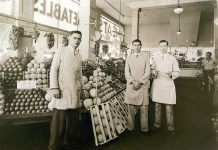It is late summer and a time when many people explore wine harvests throughout the world. Regardless of where you travel, or on which of the seven continents you land, if you’re a wine lover, you’re sure to discover a plethora of wines while gathering memorable life adventures.
An early international wine experience for me was in Cuzco, Peru. Traveling with other Spanish language and culture students, we dined on Bull’s Feet Stew paired with a crisp white Concha Y Toro wine. No one asked what varietal in those days. In fact, all I remember is being grateful to have anything with which to politely wash down the bull’s feet.
Four years later November 1978 was my next memorable wine encounter while traveling. Returning home from three months on the Island of Hydra, Greece, we detoured in Paris. On that third Thursday in November, corks popped as red wine generously flowed. We soon discovered it was a long held French tradition marking the end of grape harvest. Cobbled stone streets were closed to traffic and the vin de l’année, Beaujolais nouveau, a wine fermented for merely a few weeks prior to being released was officially for sale. Little did I know then that this joyous celebration of wine made from Gamay grapes produced in the Beaujolais region of France would be my introduction to wine marketing that would shape my adult life.
Wine grapes are cultivated on all continents, even in Antarctica. We learn much about a place by tasting its wine. For instance, soils of Antarctica have high salt content from the ocean water. This salt content adds a distinct saline flavor to the wines. Also, droppings of boisterous Adelie penguin flocks, which have rookeries in the vineyards, add nutrients to low budding vines, keeping the vines alive.
Tasting undiscovered varietals, like Vidal and Seyval Blanc from Antarctica, in their land of origin greatly adds to one’s wine vocabulary and stories to tell upon returning home.
It’s hard to believe that merely two decades ago Argentine wines were virtually unknown outside the borders of Argentina. The reason being that the per capita consumption of 21 gallons per year, one of the highest in the world, made it unnecessary to export wines until the early 2000s with the great Argentine depression.
At a time when money was scarce, Argentineans continued to gather after work and on weekends filling sidewalks of restaurants with festive laughter and camaraderie. This was possible only by sharing glasses of wine and small plates of food. Argentines refused to allow this simple pleasure to be lost during harsh years of depression.
Breaking bread and toasting with wine is an ingredient for healthy community. It’s also a natural way to dissolve cultural barriers while visiting foreign countries.
My fondest memory from Tuscany, Italy, was when visiting vineyards and the old stone winery of Dievole, established in 1090. Many of the vineyard staff was descendents of family reaching so far back their lives were defined by the ancient soils. Tasting Dievole wines while dipping course homemade bread into olive oil from the centuries-old trees which provided shade, makes me smile now remembering the lined faces and nimble, tanned hands of these men who ate quietly expressing life through the kindness of their eyes.
In Stellenbosch, South Africa, we traversed abundant terrain hiking miles admiring the fertile polyculture of a Biodynamic farm. Wildlife so prolific the morning sound of birds was deafening.
Later, as we communed over crisp Sauvignon Blanc from grapes grown on this land, we overlooked wild grasses framing the lake. Blue crane and colorful Southern red bishop birds fished for their dinners. The beef stroganoff for ours was made from homemade noodles of ancient grain grown on the property, grass-fed beef from their herd and garden fresh tomatoes. Vibrant conversations of raising food, animals and children bridged cultural divides.
In planning your next vacation, remember to stop in wine country. Or, do as I just did and travel through memories of sipping wine at communal tables of the world.
Marie Gewirtz represents wine and food clients with marketing and communications in Sonoma County and throughout the world. She can be reached at wi*******@********st.com.









